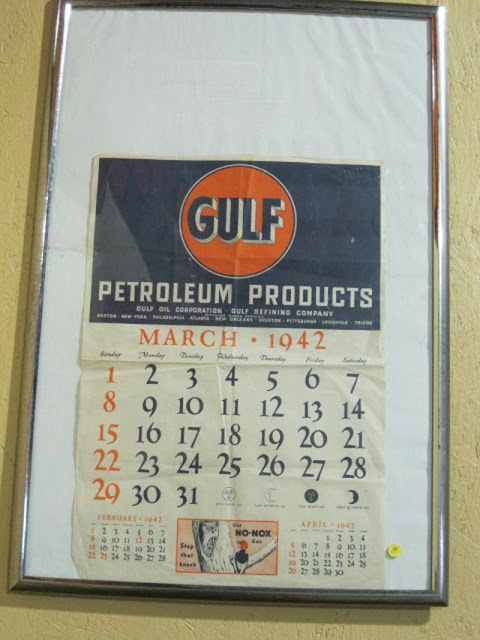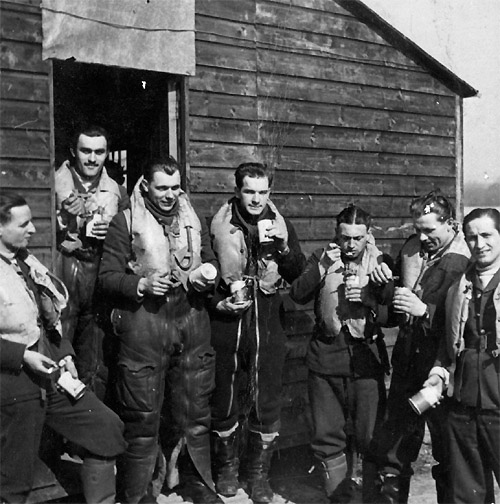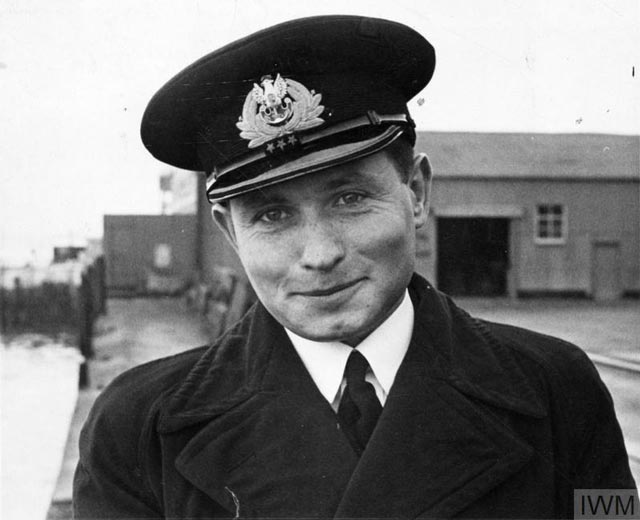Friday 13 March 1942
The main Soviet objective is the German strongpoint at Koi-Asan and the Soviets have 224 tanks. Soviet 44th Army mounts a feint against the German 132nd Infantry Division in the north along the coast, where the line bulges west slightly, but the main attack is in the center. The Red Air Force has brought in 581 aircraft to support the offensive, though most are obsolete models that are no match for the modern Luftwaffe planes.
 |
| US tanker John D. Gill, sunk on 13 March 1942. |
While the Germans stay busy knocking out the tanks, though, the Soviet infantry launches attack after attack in bitter fighting. Field Marshal Erich von Manstein, commander of the German 11th Army, calls in a top Luftwaffe fighter wing, II./JG 77, and neutralizes the Red Air Force buildup. The Soviet attacks will last for three days and is a failure.
Further north, the German 18th Army under the command of General Georg Lindemann, part of Generaloberst Georg von Küchler’s Army Group North, is trying to get its own offensive begun. The operation, codenamed Operation Raubtier ("Beast of Prey" or "Predator"), aims to cut off a Soviet salient north of Novgorod. One of the reasons for the offensive is to protect Lyuban, which is threatened by the Soviet salient. The offensive was planned to begin today, but fog and low clouds force a postponement.
 |
| Gulf calendar for March 1942. |
The conquest of Salamaua-Lae frees up the forces to invade Tulagi in the Solomon Islands eventually. In preparation for that, the Japanese 4th Fleet sails from Rabaul, New Britain, to seize Buka Island, Solomon Islands.
US Navy submarine USS Gar, on its maiden patrol, torpedoes and sinks 1520-ton Japanese freighter Chichiubu Maru about 6-10 miles southwest of Mikura Jima, Japan. Gar is patrolling near the Nagoya and the Kii Channel entrance to the Inland Sea of Japan.
 |
| Chilean freighter Tolten, sunk by U-404 on 13 March 1942. |
Japanese submarine HIJMS I-25 sends its "Glen" patrol plane to reconnoiter Auckland, New Zealand. As with similar flights, this one by Japanese Warrant Flying Officer Nobuo Fujita (who had flown over Melbourne on 26 February) passes unnoticed.
Having secured Java on 12 March, the Japanese quickly send the Sakaguchi Detachment from there to Burma to rejoin the 56th Division.
General MacArthur and most of his party, having escaped from Bataan, arrive at Cagayan on Mindanao Island aboard three motor torpedo (PT) boats after a two-day journey. MacArthur, however, is temporarily stranded there because there are no sufficiently reliable planes at Del Monte Airfield to take him to his destination in Australia. Major General George Brett, Commanding General U.S. Army Forces in Australia, sends three B-17 Flying Fortresses from there to pick up the general. A fourth PT boat had to divert to Tagauayan Island due to engine trouble. Submarine USS Permit arrives there during the day and picks up the crew and passengers. Permit's commander destroys the disabled PT boat (PT-32) with its deck gun before leaving.
After dark, RAF Bomber Command attacks Cologne with 135 bombers (112 reach the target) at the cost of one Manchester. There is extensive damage in the Nippes section of the city, especially to the Franz Cloud rubber works and the Land- und See-Kabelwerke A.G. factory. Five churches and 1500 homes are hit. This is the first successful raid led by the Gee navigational system. It also involves the use of "Pathfinder" bombers (though they are not yet called that) which drop flares and incendiary bombs to identify the target for following bombers. The results are good, with 237 separate fires started, 62 Germans killed, and 84 injured.
Bomber Command also sends two bombers to attack the port area at Ostend, 20 aircraft to bomb Boulogne (seven planes bomb the target), and 19 to bomb the port area of Dunkirk (11 complete the attack). One other bomber attacks Schiphol Airfield near Amsterdam, and one bombs Bonn. Another five Hampdens drop leaflets over France.
 |
| US schooner Albert F. Paul, sunk by U-332 on 13 March 1942. |
- 735-ton US schooner Albert F. Paul (all 8 aboard killed)
- 5402-ton Yugoslavian freighter Trepca (4 dead, 33 survivors)
U-404 (Kptlt. Otto von Bülow), on its second patrol out of Lorient, torpedoes and sinks 1858-ton Chilean freighter Tolten east of Neptune, New Jersey. There is only one survivor and 27 dead. This sinking of a neutral ship leads to a diplomatic protest by the Chilean government, but things soon settle down and it does not lead to a break in relations between Chile and Germany.
U-158 (Kptlt. Erwin Rostin), on its first patrol out of Lorient, torpedoes and sinks 11,641-ton US tanker John D. Gill about 25 miles east of Cape Fear, North Carolina. There are 26 survivors (many badly burned) and 23 deaths.
Italian submarine Enrico Tazzoli torpedoes and sinks 6422-ton British freighter Daytonian in the Atlantic while en route from Mobile to Halifax.
 |
| Historical artwork by Peter McIntyre, "Wrecked Italian tank at Sidi Barrani, 13 March 1942" - watercolor (New Zealand government). |
HMS Turbulent (Cdr. J.W. Linton) sinks 32-ton Greek schooner Anastassis (KAL-155) with its deck gun west of Serifos, Greece.
Freighter Rabmanso leaves Haifa, Palestine, with a cargo of 7000 tons grain in emergency food supplies for Greece.
Anglo/US Relations: President Roosevelt cables Winston Churchill to discuss relations with China. Chiang Kai-Shek has requested the appointment of General "Vinegar Joe" Stilwell to command all Allied forces in Burma and southern China. While FDR notes that this would be "unwise," he tells Churchill that he is "pleased" that Chiang is forming a "closer working relationship" with the US and UK. Chiang, of course, remains upset with the British over the Tulsa Incident in which local British commanders in Burma tried to take US Lend-Lease goods intended for China.
Australian/US Relations: Prime Minister Curtin broadcasts to the United States that "Our minds are set on attack." He instructs Minister for External Affairs Dr. Evatt to head immediately for Washington (this takes a week).
 |
| A U.S. Navy North American SNJ-2 Texan (BuNo 2556) at Naval Air Station Pensacola, Florida (USA), in March 1942. (U.S. Navy National Museum of Naval Aviation photo No. 1996.488.166.130). |
The 8th Pursuit Group, 36th Pursuit Squadron, 5th Air Force, transfers from Brisbane to Lowood, Australia. They fly P-39s.
USAAF XII Bomber Command headquarters is activated at MacDill Field, Tampa, Florida.
Julia Flikke, Nurse Corps, becomes the first female Colonel in the U.S. Army, 13 March 1942.
 |
| Yugoslavian freighter Trepca, sunk by U-332 on 13 March 1942. |
Holocaust: A transport of 62 Poles deported by Germans from Warsaw arrives at Auschwitz concentration camp. Among them are 23 prison wardens from Pawiak prison arrested for helping prisoners there to escape and communicate with the outside world.
American Homefront: 20th Century Fox releases the musical comedy film "Song of the Islands" starring Betty Grable and Victor Mature. While little remembered, "Song of the Islands" begins Grable's long run as a major box office star. She will remain in the top ten box office stars every year from 1942 into the 1950s, hitting No. 1 in 1943.
 |
| NYPD New York City Police Department "Spring 3100 Magazine" from March 1942.Volume 13, No.1. |
March 1942
March 1, 1942: Second Battle of Java Sea
March 2, 1942: Huge Allied Shipping Losses at Java
March 3, 1942: Japan Raids Western Australia
March 4, 1942: Second Raid On Hawaii
March 5, 1942: Japan Takes Batavia
March 6, 1942: Churchill Assaults Free Speech
March 7, 1942: British Defeat in Burma
March 8, 1942: Rangoon Falls to Japan
March 9, 1942: Japanese Conquest of Dutch East Indies
March 10, 1942:US Navy attacks Japanese Landings at Lae
March 11, 1942: Warren Buffett's First Stock Trade
March 12, 1942: Japan Takes Java
March 13, 1942: Soviets Attack In Crimea Again
March 14, 1942: The US Leans Toward Europe
March 15, 1942: Operation Raubtier Begins
March 16, 1942: General MacArthur Gets His Ride
March 17, 1942: MacArthur Arrives in Australia
March 18, 1942: Japan Attacks In Burma
March 19, 1942: Soviets Encircled on the Volkhov
March 20, 1942: "I Shall Return," Says MacArthur
March 21, 1942: Germans Attack Toward Demyansk
March 22, 1942: Second Battle of Sirte
March 23, 1942: Hitler's Insecurity Builds
March 24, 1942: Bataan Bombarded
March 25, 1942: Chinese Under Pressure in Burma
March 26, 1942: Win Or Die, Vows MacArthur
March 27, 1942: The Battle of Suusari
March 28, 1942: The St. Nazaire Commando Raid
March 29, 1942: The Free Republic of Nias
March 30, 1942: Japanese-Americans Off Bainbridge Island
March 31, 1942: Japanese Seize Christmas Island
2020













